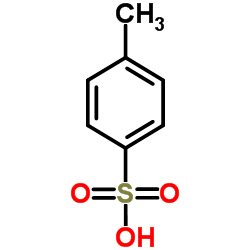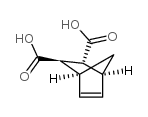3853-88-1
| Name | cis-5-Norbornene-endo-2,3-dicarboxylic acid |
|---|---|
| Synonyms |
cis,endo-Bicyclo[2.2.1]-5-heptene-2,3-dicarboxylic acid
cis,endo-5-Norbornene-2,3-dicarboxylic acid EINECS 223-301-0 MFCD00003735 Bicyclo[2.2.1]hept-5-ene-2,3-dicarboxylic acid 3,6-Endomethylene-.δ.4-tetrahydrophthalic acid |
| Density | 1.5±0.1 g/cm3 |
|---|---|
| Boiling Point | 419.8±45.0 °C at 760 mmHg |
| Melting Point | 175ºC (dec.)(lit.) |
| Molecular Formula | C9H10O4 |
| Molecular Weight | 182.173 |
| Flash Point | 221.8±25.2 °C |
| Exact Mass | 182.057907 |
| PSA | 74.60000 |
| LogP | 0.35 |
| Vapour Pressure | 0.0±2.1 mmHg at 25°C |
| Index of Refraction | 1.601 |
Synonym:exo, exo Bicyclo[2.2.1]hept-2-ene-5,6-dicarboxylic aci Section 2 - COMPOSITION, INFORMATION ON INGREDIENTS
Risk Phrases: 36/37/38 Section 3 - HAZARDS IDENTIFICATION EMERGENCY OVERVIEW
Irritating to eyes, respiratory system and skin. Potential Health Effects Eye: Causes eye irritation. Skin: Causes skin irritation. May be harmful if absorbed through the skin. Ingestion: May cause irritation of the digestive tract. May be harmful if swallowed. Inhalation: Causes respiratory tract irritation. May be harmful if inhaled. Chronic: Not available. Section 4 - FIRST AID MEASURES Eyes: Flush eyes with plenty of water for at least 15 minutes, occasionally lifting the upper and lower eyelids. Get medical aid. Skin: Get medical aid. Flush skin with plenty of water for at least 15 minutes while removing contaminated clothing and shoes. Ingestion: Get medical aid. Wash mouth out with water. Inhalation: Remove from exposure and move to fresh air immediately. If not breathing, give artificial respiration. If breathing is difficult, give oxygen. Get medical aid. Notes to Physician: Treat symptomatically and supportively. Section 5 - FIRE FIGHTING MEASURES General Information: As in any fire, wear a self-contained breathing apparatus in pressure-demand, MSHA/NIOSH (approved or equivalent), and full protective gear. Extinguishing Media: Use water spray, dry chemical, carbon dioxide, or chemical foam. Section 6 - ACCIDENTAL RELEASE MEASURES General Information: Use proper personal protective equipment as indicated in Section 8. Spills/Leaks: Vacuum or sweep up material and place into a suitable disposal container. Section 7 - HANDLING and STORAGE Handling: Avoid breathing dust, vapor, mist, or gas. Avoid contact with skin and eyes. Storage: Store in a cool, dry place. Store in a tightly closed container. Section 8 - EXPOSURE CONTROLS, PERSONAL PROTECTION Engineering Controls: Facilities storing or utilizing this material should be equipped with an eyewash facility and a safety shower. Use adequate ventilation to keep airborne concentrations low. Exposure Limits CAS# 3853-88-1: Personal Protective Equipment Eyes: Not available. Skin: Wear appropriate protective gloves to prevent skin exposure. Clothing: Wear appropriate protective clothing to prevent skin exposure. Respirators: Follow the OSHA respirator regulations found in 29 CFR 1910.134 or European Standard EN 149. Use a NIOSH/MSHA or European Standard EN 149 approved respirator if exposure limits are exceeded or if irritation or other symptoms are experienced. Section 9 - PHYSICAL AND CHEMICAL PROPERTIES Physical State: Solid Color: white Odor: Not available. pH: Not available. Vapor Pressure: Not available. Viscosity: Not available. Boiling Point: Not available. Freezing/Melting Point: 145 - 147 deg C Autoignition Temperature: Not available. Flash Point: Not available. Explosion Limits, lower: Not available. Explosion Limits, upper: Not available. Decomposition Temperature: Solubility in water: Specific Gravity/Density: Molecular Formula: C9H10O4 Molecular Weight: 182.17 Section 10 - STABILITY AND REACTIVITY Chemical Stability: Not available. Conditions to Avoid: Incompatible materials. Incompatibilities with Other Materials: Oxidizing agents. Hazardous Decomposition Products: Carbon monoxide, carbon dioxide. Hazardous Polymerization: Has not been reported Section 11 - TOXICOLOGICAL INFORMATION RTECS#: CAS# 3853-88-1 unlisted. LD50/LC50: Not available. Carcinogenicity: Bicyclo[2.2.1]hept-5-ene-2,3-dicarboxylic acid - Not listed by ACGIH, IARC, or NTP. Section 12 - ECOLOGICAL INFORMATION Section 13 - DISPOSAL CONSIDERATIONS Dispose of in a manner consistent with federal, state, and local regulations. Section 14 - TRANSPORT INFORMATION IATA No information available. IMO No information available. RID/ADR No information available. Section 15 - REGULATORY INFORMATION European/International Regulations European Labeling in Accordance with EC Directives Hazard Symbols: XI Risk Phrases: R 36/37/38 Irritating to eyes, respiratory system and skin. Safety Phrases: S 26 In case of contact with eyes, rinse immediately with plenty of water and seek medical advice. S 37/39 Wear suitable gloves and eye/face protection. WGK (Water Danger/Protection) CAS# 3853-88-1: No information available. Canada None of the chemicals in this product are listed on the DSL/NDSL list. CAS# 3853-88-1 is not listed on Canada's Ingredient Disclosure List. US FEDERAL TSCA CAS# 3853-88-1 is not listed on the TSCA inventory. It is for research and development use only. SECTION 16 - ADDITIONAL INFORMATION N/A |
| Hazard Codes | Xn: Harmful; |
|---|---|
| Risk Phrases | 20/21/22-36/37/38 |
| Safety Phrases | 26-37/39 |
| WGK Germany | 3 |
| HS Code | 2917209090 |
| Precursor 6 | |
|---|---|
| DownStream 6 | |
| HS Code | 2917209090 |
|---|---|
| Summary | 2917209090 other cyclanic, cyclenic or cyclotherpenic polycarboxylic acids, their anhydrides, halides, peroxides, peroxyacids and their derivatives。supervision conditions:AB(certificate of inspection for goods inward,certificate of inspection for goods outward)。VAT:17.0%。tax rebate rate:9.0%。MFN tariff:6.5%。general tariff:30.0% |

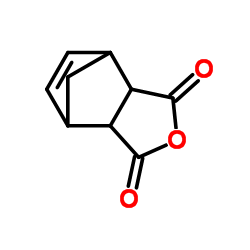
![bicyclo[2.2.1]hept-5,6-ene-2α,3β-dicarbonitrile structure](https://image.chemsrc.com/caspic/415/24425-58-9.png)
![Bicyclo[2.2.1]heptane-2,3-dicarboxylicacid, 5,6-dibromo structure](https://image.chemsrc.com/caspic/411/6319-07-9.png)
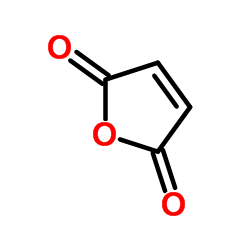

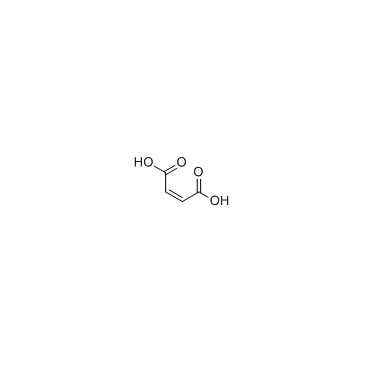
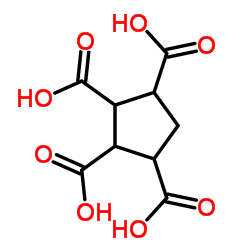

![endo,endo-5,6-dihydroxybicyclo[2.2.1]heptane-endo,endo-2,3-dicarboxylic acid dilactone structure](https://image.chemsrc.com/caspic/469/5826-27-7.png)
